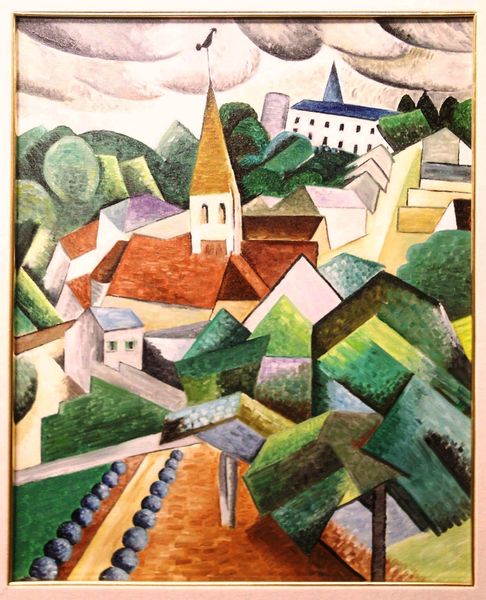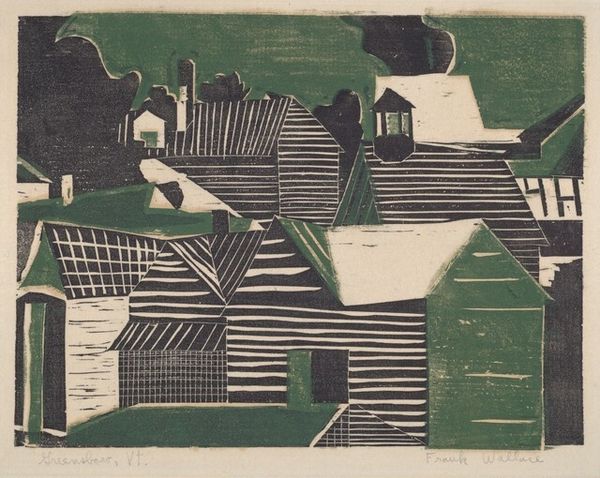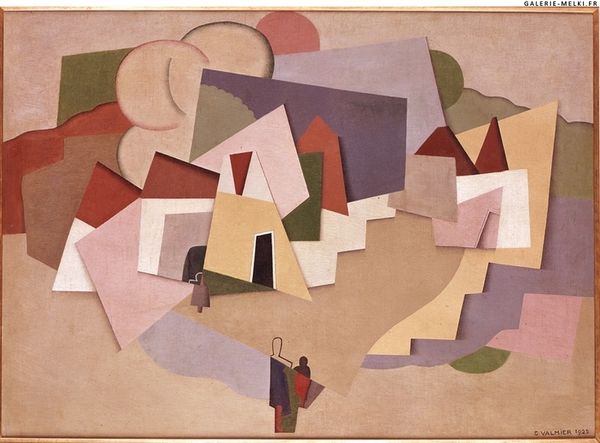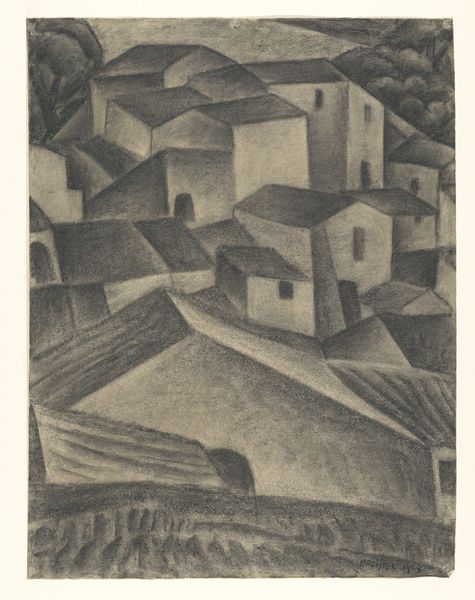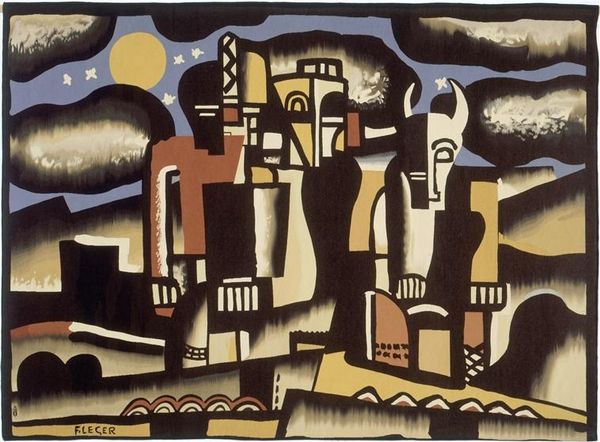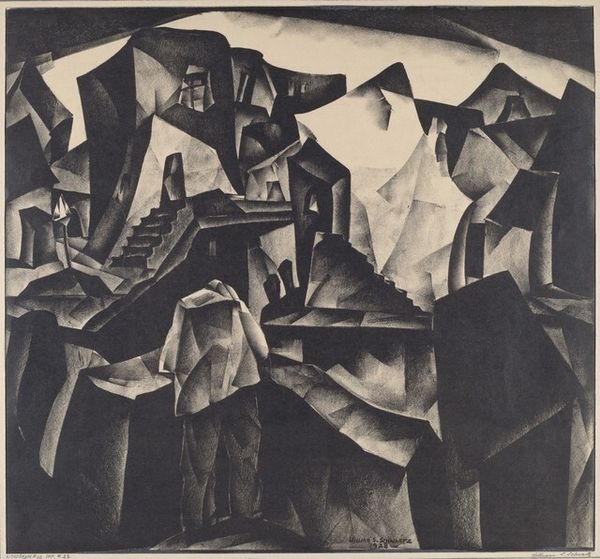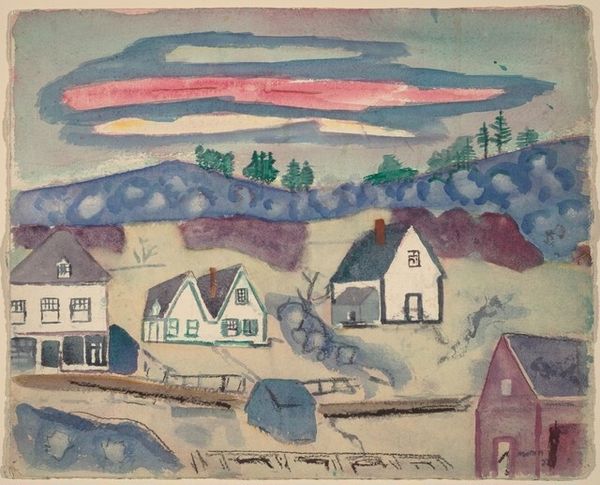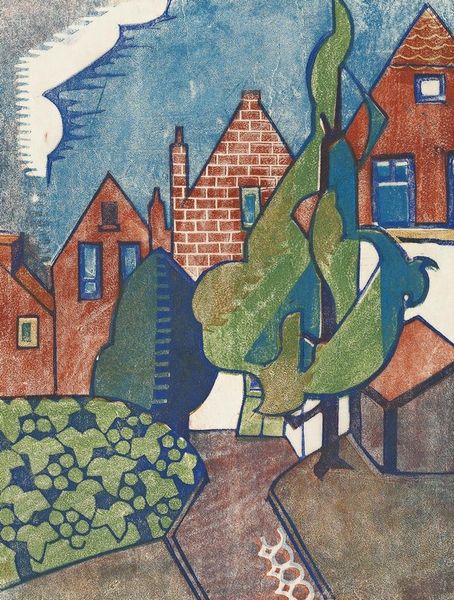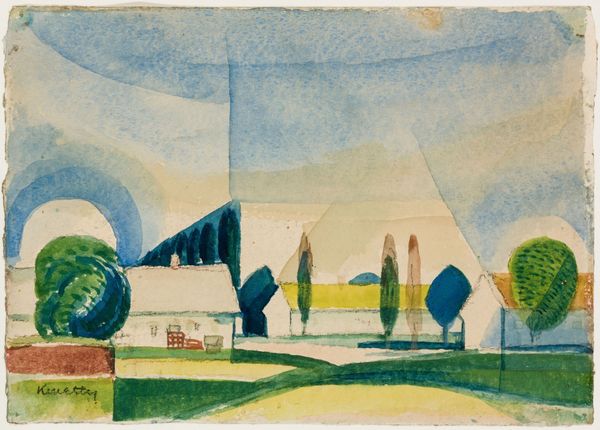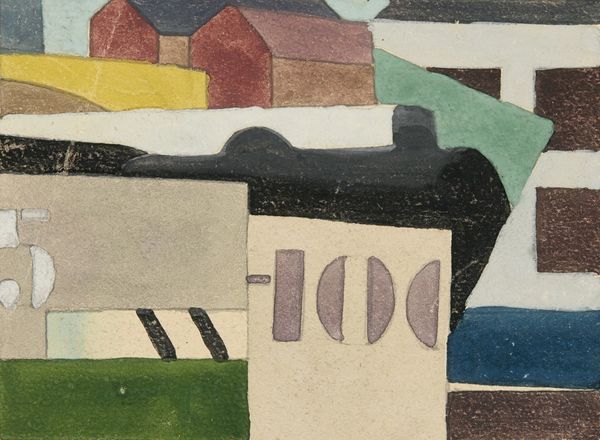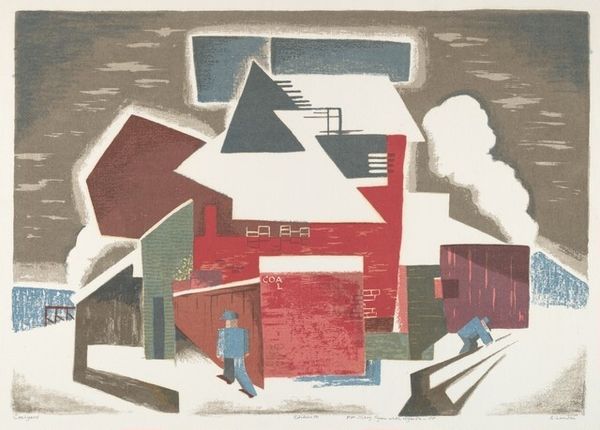
print, woodcut
# print
#
landscape
#
geometric
#
woodcut
#
cityscape
#
modernism
Dimensions: image: 304 x 457 mm sheet: 379 x 534 mm
Copyright: National Gallery of Art: CC0 1.0
Edward Landon made this color linocut, "The French Farm," at some point during his career as a commercial artist in America. The print shows a cluster of buildings in a rural setting, rendered in a style that blends modern abstraction with elements of traditional landscape. The image creates meaning through its visual codes, cultural references, and historical associations. The angular shapes and simplified forms suggest the influence of European modernism, particularly Cubism, which was associated with radical politics. Made during the depression, Landon would have wanted to comment on the social structures of his own time. Was he self-consciously conservative or progressive? Did he critique the institutions of art? To understand Landon’s work, a historian would want to research the state of American printmaking and the role of artists during the Great Depression. What was the public role of art? What were the politics of imagery? What were the social conditions that shaped artistic production? Considering these factors helps us understand the meaning of art as something contingent on social and institutional context.
Comments
No comments
Be the first to comment and join the conversation on the ultimate creative platform.
